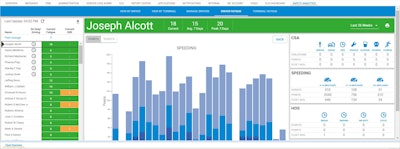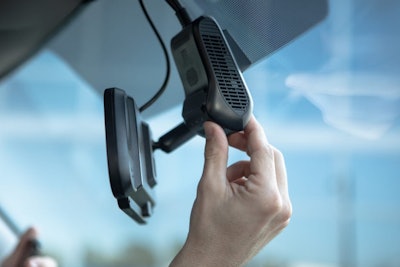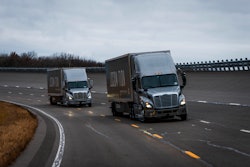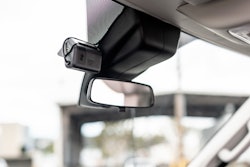
Time is the most valuable resource for any fleet manager, but far too often time gets consumed handling exceptions that detract focus from activities that produce better outcomes from the start.
During the COVID-19 pandemic, many fleets have accelerated their use of technology to remove busywork and give people more time to spend on the most essential business activities.
Such has been the case for Quality Transport, a 20-truck dry van carrier based in Freeport, Ill. Senior Vice President Amanda Schuier, who works remotely in Missouri, had been wanting greater access to data than its outdated transportation management software (TMS) system could provide.
In March 2020, she led a changeover to Axele, a cloud-based TMS, and soon after a new ELD platform from Samsara. The two systems are integrated to share real-time visibility of fleet operations, financial, compliance and safety data.
One of the most significant time savings of new technology is having drivers’ hours-of-service (HOS) data within the TMS. Previously, getting HOS data to plan loads was a manual process that involved “constantly talking to drivers,” she said.
As a small fleet operator, Schuier looks for technology that provides data that is easy to interpret and take action on. “Overall, we are so much better than what we were a year ago because of technology upgrades.”
Quality Transport is currently testing dual-facing dash cameras from Samsara with built-in artificial intelligence to give drivers real-time alerts for risky behaviors such as fatigue, distraction and following distance. New drivers are being assigned trucks with cameras installed, and “I’d like to get them installed fleet wide,” Schuier said.
Below are four main areas in safety where new technology continues to reduce busywork for managers to focus on more effective activities.
1. Virtual driver training
As safety trainer for America’s Service Line, a 200-truck private fleet for American Foods Group, Keith Maisch was hesitant about changing the company’s hands-on driver orientation program to an online format.
“I excel at one-on-one training and working directly with drivers,” he said. His mind changed quickly in March when the pandemic made it difficult, if not impossible, to bring drivers into the office for orientation.
America's Service Line started using the Luma eNugget LMS, an online learning management system and training collection with nearly 600 customizable modules that cover relevant driver safety, compliance and orientation topics with content in mixed mediums. With the platform, new driver hires receive texts or emails to login to the system before they come to the office to complete orientation training and employment paperwork.
Since using the new system, the carrier has been saving four to five hours of classroom training. Maisch converted the time savings into longer road tests and hands-on training to give drivers more feedback and coach bad habits they might have acquired.
Additionally, the company began doing quarterly safety trainings online that previously were done in person. It also added monthly training assignments through the Luma platform.
“Monthly trainings are invaluable to me,” he said. “I don’t know what we would do without them. They help to breed a safety culture, rather than something we talk about a couple times a year. We might even get to a point where we do a weekly training assignment.”
Maisch estimates America’s Service Line, which transports product for the nation's fifth-largest beef producer, is saving $11,500 per year in orientation training costs and more than $88,000 a year by shifting its monthly and quarterly driver meetings online.
“There are a lot of costs involved in getting 200 trucks here to Green Bay to do those meetings,” he said.
2. Automated driver coaching
New technology developments are also focusing on reducing the number of exceptions that can overwhelm fleet managers with data.
 The Safety Analytics scorecard from Trimble Transportation gives fleet managers a snapshot of changes in driver safety behaviors over time.Trimble
The Safety Analytics scorecard from Trimble Transportation gives fleet managers a snapshot of changes in driver safety behaviors over time.Trimble
“Are we actually doing a good job of removing the busy work?” he asked.
Orban would like to see video-based safety systems automatically determine the validity of critical events and curate a coaching plan for drivers.
Trimble is developing new algorithms for its Video Intelligence platform that will monitor video and telematics inputs to determine why a critical safety event occurred. For instance, a driver may have decelerated quickly due to another driver cutting him off in traffic. This is a far less risky event than a driver who is following too closely, he said.
Trimble is also working on developing automated features to give drivers daily coaching plans. As an example, after a hard braking event, a driver might need to answer a question sent through an in-cab mobility system, such as “What is the proper following distance?”
Another possibility is for technology to automatically create a daily coaching plan for drivers based on their risk profile. It could be as simple as a message with a simple tip for what to improve or a recognition for a job well done, Orban said.
From years of experience analyzing safety data and outcomes, Orban says positive conversations and interactions with drivers are much more effective at reducing accidents than negative critiques.
If drivers ignore the coaching plans or have more severe behaviors, Orban said the next step would be to automatically trigger follow-up actions for management.
3. Driver self-coaching
One of the efforts being made by technology suppliers is to help drivers eliminate distractions outside and inside the cab, and to provide drivers with self-coaching tools. Both of these efforts can remove busywork for safety managers.
Kinana Hussain, vice president of product line management for CalAmp, said that video safety systems can be used to give drivers basic alerts to help keep their attention focused on the road ahead.
 CalAmp has developed various in-cab alerts for its fleet video and telematics system, iOn Vision, for inadvertently speeding, drifting from their lane or not stopping at stop sign.
CalAmp has developed various in-cab alerts for its fleet video and telematics system, iOn Vision, for inadvertently speeding, drifting from their lane or not stopping at stop sign.
“We want to enable drivers to self-correct, so it does not even need to go to a fleet manager,” he said. The system can prompt drivers with alerts for inadvertently speeding, drifting from their lane or not stopping at stop signs.
Fleet managers can also make a scorecard visible to drivers with up to seven areas of measurement. Hussain said that CalAmp is also working on a driver-facing application that will give feedback at the end of each trip for self-coaching.
In addition to more self-coaching tools for drivers, Hussain sees a need in the market “to simplify how [fleet managers] consume these insights” by synthesizing the highest-risk events and drivers in a report to prioritize coaching.
“Fleet managers don’t have the horsepower to sit down with every driver out there,” he said.
As the capabilities of video telematics systems continue to advance, the systems are able to manage and prioritize alerts so as to not inundate drivers with messages.
Text-to-speech alerts are better than visual or audible alerts that simply distract the driver, which ultimately makes a situation more confusing or causes a driver to take their eyes off the road, said Jason Palmer, director of integration at Omnitracs, which acquired SmartDrive last fall.
SmartDrive has a Speeding for Conditions feature that allows fleets to provide real-time text-to-speech alerts and prescriptive messaging about weather events that drivers are dealing with or about to deal with on the road ahead.
For example, an alert could say, “the temperature is reaching 32 degrees, there may be freezing rain conditions, and the recommended speed is 45 mph.”
The alert is prioritized on a common platform to ensure that multiple devices are not alerting the driver at the same time, Palmer explained.
4. Reducing work-related injuries
Besides using video telematics systems to detect risky behaviors and predict accident risks, motor carriers are beginning to use the analytics from these and other systems to automate other types of workflows.
A growing number of fleets, especially those in the food and beverage industry, are looking to automate training to avoid work-related injuries that take place outside the vehicle.
Worklete has developed a new cloud-based platform, Smart Safety, that predicts the risk of muscular and skeletal injuries based on drivers’ daily job behaviors. The platform captures data from HR systems and surveys as well as from video telematics systems.
Smart Safety can plug into a fleets’ ELD system to monitor if drivers are doing pre-trip inspections, for example. It can also plug into a video-based safety system to correlate driving behaviors with injury risks.
The Worklete platform uses the data to create risk profiles and will automatically assign short learning modules specific to individual drivers’ needs. The modules are designed to build worker engagement and improve work habits, said Ben Kanner, Worklete’s chief executive.
Drivers get a specific cadence of training based on their risk profiles. Those with a higher risk are highlighted to management for intervention. Safety managers save time by not doing in-person observations and training, he said.
Worklete sees companies reducing claims by more than 50% for soft tissue injuries and a 25% reduction altogether. The technology also has recruiting and retention benefits.
“A lot of frontline folks want to work for companies that care for them and provide good technology. They have been underserved by technology for many years,” he said.














